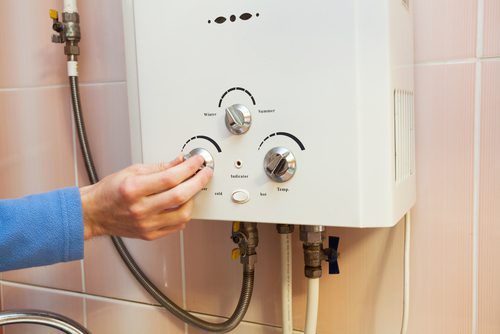Just how do you really feel when it comes to What Kind of Maintenance Do Water Heaters Need??

Warm water is important for day-to-day comfort, whether it's for a revitalizing shower or cleaning meals. To ensure your warm water system runs effectively and lasts longer, normal upkeep is key. This post offers sensible ideas and insights on just how to maintain your home's warm water system to prevent disruptions and pricey repair work.
Intro
Preserving your home's hot water system may seem overwhelming, but with a few basic actions, you can ensure it runs smoothly for several years to come. This overview covers whatever from recognizing your hot water system to do it yourself maintenance tips and understanding when to call in specialist help.
Value of Keeping Your Hot Water System
Normal maintenance not just extends the life expectancy of your warm water system however additionally ensures it operates effectively. Neglecting maintenance can bring about decreased performance, higher energy costs, and even premature failure of the system.
Indicators Your Hot Water System Requirements Upkeep
Knowing when your warm water system requires attention can stop significant issues. Watch out for indicators such as inconsistent water temperature, odd sounds from the heater, or rustic water.
Recognizing Your Warm Water System
Before diving into upkeep jobs, it's useful to comprehend the standard components of your hot water system. Normally, this includes the water heater itself, pipes, anode poles, and temperature level controls.
Monthly Maintenance Tasks
Routine month-to-month checks can aid catch minor problems before they intensify.
Purging the Hot Water Heater
Purging your water heater removes sediment accumulation, boosting performance and prolonging its life.
Checking and Replacing Anode Rods
Anode rods stop deterioration inside the container. Inspecting and changing them when broken is essential.
Inspecting and Adjusting Temperature Settings
Changing the temperature settings makes sure ideal efficiency and safety and security.
Do It Yourself Tips for Upkeep
You can execute numerous upkeep jobs on your own to maintain your warm water system in leading problem.
Looking for Leakages
Regularly inspect pipes and links for leakages, as these can bring about water damages and greater expenses.
Checking Stress Alleviation Valves
Checking the pressure relief valve ensures it functions correctly and prevents excessive pressure build-up.
Shielding Pipelines
Shielding warm water pipes decreases heat loss and can save power.
When to Call a Specialist
While DIY upkeep is valuable, some problems need specialist know-how.
Complicated Problems Requiring Professional Help
Examples consist of significant leaks, electric troubles, or if your hot water heater is regularly underperforming.
Routine Professional Upkeep Perks
Expert maintenance can consist of complete assessments, tune-ups, and guaranteeing conformity with safety and security standards.
Verdict
Normal upkeep of your home's hot water system is important for efficiency, long life, and price savings. By complying with these pointers and understanding when to seek specialist assistance, you can ensure a reliable supply of warm water without unexpected disturbances.
How to Maintain an Instant Hot Water Heater
Before tinkering with your hot water heater, make sure that it’s not powered on. You also have to turn off the main circuit breaker and shut off the main gas line to prevent accidents. Also turn off the water valves connected to your unit to prevent water from flowing into and out of the appliance. 2. When you’re done, you have to detach the purge valves’ caps. These look like the letter “T†and are situated on either side of the water valves. Doing so will release any pressure that has accumulated inside the valves while at the same time avoid hot water from shooting out and burning your skin. 3. When the purge valves’ caps are removed, you have to connect your hosing lines to the valves. Your unit should have come with three hoses but if it didn’t, you can purchase these things from any hardware or home repair shops. You can also get them from retail stores that sell water heating systems. Read the user’s manual and follow it to complete this task properly. When the hosing lines are connected, open the purge port’s valves. 4. You should never use harsh chemical cleaners or solutions when cleaning your unit. Make use of white vinegar instead. It should be undiluted and you’ll probably use about 2 gallons. 5. Now flush your water heater. This task should probably take about 40 minutes. We can’t give you specific directions for this because the procedure is carried out depending on the type, model and brand of your heater. With that being said, refer to the user’s manual. 6. When you’re done draining the unit, you have to turn off the purge port valves again. Remove the hosing lines that you earlier installed on each of the water valves. Put the valve caps (purge port) back in their respective places and be very careful so as not to damage the rubber discs that are found inside these caps. 7. Now that everything’s back in place, check your user’s manual again to find out how to reactivate your water heating system. 8. Once it is working, turn one of your hot water faucets on just to let air pass through the heater’s water supply pipes. Leave the tap on until water flows smoothly out of it. https://www.orrplumbing.com/blog/2014/september/how-to-maintain-an-instant-hot-water-heater/

I was made aware of that article about Tips For Maintaining Your Hot Water Heater through someone on another web property. Loved our blog entry? Please quickly share it. Let others find it. We truly appreciate your readership.
Get Quote